'Outer space science' procedure has rejuvenated over 700 lives
Published in Health & Fitness
CHARLOTTE, N.C. -- After having her head shaved by nurses at Novant Health Mint Hill Medical Center, patient Catherine Klie’s right hand shook as she tried to trace spiral circles and straight lines with a marker.
It didn’t look good, with scribbly markings on the test paper.
Tremors run in her family and began affecting her in her 20s. The hereditary condition has impacted the 78-year-old’s life and stopped her from performing small routine activities most people take for granted.
“I know for a guy it’s different, but I can’t do my nails, I can’t do my makeup, I can’t use a curling iron,” Klie said about doing typically feminine things. “It’s all those small things that you don’t really think about, that you can’t do.”
But a brain procedure at the Mint Hill facility helped change that. For neurosurgeon Dr. Charles Munyon the most fascinating part of his work is removing her tremors without putting her under the knife.
On Sept. 29, she became the 709th incisionless brain surgery patient. The medical center celebrated its 700th surgery in August. Novant has completed the most incisionless brain surgeries in the world at its Mint Hill location, according to the company, which is one of the largest providers of hospitals in the Charlotte region.
The surgery was a success. Klie allowed The Charlotte Observer to watch and document it.
A new approach
Munyon performed Klie’s surgery, which uses high-energy ultrasound waves to target areas of the brain and improve tremors through technology from Insightec, a company treating medical conditions with advanced MRI-guided focused ultrasound.
Disorders like tremors can be traced to specific misbehaving circuits in the brain, Munyon said while explaining the procedure. Focused ultrasound provides a less invasive approach than procedures like Deep Brain Stimulation, which involves inserting wires into the brain to use electricity to regulate activity in these circuits.
“But for a lot of patients, that’s a lot to go through,” Munyon said, saying Deep Brain Stimulation is less convenient.
The ultrasound works by using high-energy sound waves aimed to meet at a single focal point inside the brain. This concentration of energy creates a tiny, controlled burn that interrupts the faulty circuit causing the tremor.
“We’re using sound waves coming from all around the top of the head, and each individual sound wave is carrying a certain amount of energy, but not enough to damage any of the tissue that it’s traveling through,” Munyon explained. Novant’s Mint Hill center has performed hundreds of surgeries since the program began five years ago.
There were not many treatment centers available nationally several years ago, Munyon said.
The Mint Hill center was one of the few accepting Medicare to use the ultrasound brain surgery for Parkinson’s disease.
This drew residents from all over the U.S. The facility continues to get patients from the Carolinas, Virginia, Georgia, Tennessee, Alabama and Florida.
Follow-up data shows the majority of patients who underwent the surgery had improved quality of life. More than half saw better control of their tremors.
Munyon finds it rewarding to hear from patients a few weeks after the procedure.
“They’ve started to really have a chance to see what they can do,” he said. “Some of them will show me pictures that they’ve painted, drawings that they’ve done, or just their handwriting… or they’ll tell me about the projects they’re working on, or just about going out to eat with friends and not being embarrassed by their handshaking.”
And he made Klie feel at ease.
“If anybody is playing with my brains, I have to check them out,” she said with a chuckle, referring to meeting and talking with Munyon for over an hour. “I had concerns, but everything I found was very positive.”
A life changing journey
Klie drove about two hours from the Columbia, South Carolina, area. The Akron, Ohio, native moved to the Carolinas for family reasons and now lives on a small hobby farm just outside Columbia.
Back in Akron, she founded the St. Joseph Parenting Center, an organization dedicated to helping at-risk parents with job placement and preventing children from going into foster care. The program is still operating in Connecticut.
With a passion to help people, Klie now wants to spend more time volunteering to help the homeless in Columbia.
“I would love to work in a soup kitchen, not spilling everything,” she said.
Prior to the surgery, it was a challenge to do everyday things like use a computer or a cell phone, because it’s hard to push numbers. She took medication for her tremors, but the relief was only temporary and came with side effects.
“I’m winding up taking handfuls of pills that really are barely working, and I don’t like that either,” Klie said. After learning about the procedure from a TV segment several years ago, she kept up with research and new advancements. She was later referred by her primary care doctor in Columbia.
Klie was motivated to undergo the procedure to encourage her family members with tremors to get treatments sooner. She wants to set an example for her 17-year-old grandson who was recently diagnosed. One of her nephews had to drop out of architecture school because of his tremors. “I’m hoping that maybe he won’t have to get to a point where he’s 78-years-old and needs (medication),” she said.
Munyon worked on her right hand first since it is her dominant hand. She is planning to return in several months for the left.
The incisionless procedure
The moment finally arrived, with Munyon explaining how everything was going to work.
Munyon placed a head holder with four sharp pins on Klie’s head to keep it completely still during the treatment. The pins went through the scalp and were docked on the surface of her skull with numbing cream. This is the only point where skin is broken.
Next, Klie was taken back to the MRI scanner, where a special membrane was placed on her head to hold cold water for cooling and to aid sound wave transmission.
“We call it the alien abduction experience,” Munyon said about the frigid water.
Klie was warm from the neck down with blankets. Her legs were propped up to take the pressure off her lower back.
She went inside the MRI and Munyon went into the control room to monitor her progress on a computer that displayed images of her brain with colorful spots indicating heat.
For the first 15 minutes, pictures were taken to produce a treatment plan. As the procedure continued, Klie was tested for improvements, one of which was called the stun test.
“I call it setting phasers to stun,” Munyon said, referencing Star Trek. “Basically, I’m going to stun that area of the brain. I’m going to see, do we get improvement? Do we have any unexpected side effects? If we have improvement and no side effects, we know we’re at the right target.”
Next, the energy is turned up for treatment to create the permanent lesion to interrupt the circuit. This took several tries.
Gripping a cup of water, Klie moved her hand as Munyon observed. She was asked to trace more spirals and straight lines.
“We’re not looking for huge improvement here,” Munyon said at the start. “We’re just making sure we’re in the appropriate neighborhood.”
With several treatments, the drawings began looking a lot smoother than before, even while on her back.
After Munyon finished the procedure, she was rolled out of the MRI room with the help of Munyon and nurses.
“That was really bizarre,” she said as Munyon removed the screws from the holder. “I feel terrific. I really thought there would be more discomfort, and there absolutely is not.”
Following the hour-plus procedure, her hand was steadier.
“Look at that,” she said. “It’s been years since I had a hand like that… it feels strange not to shake.”
‘Let’s toast’
After the surgery, Klie went to her room with her husband, Tim, and ate pieces of a granola bar with a steady hand, with no stiffness or tingling.
“I just find this absolutely amazing,” she said.
She also sipped from a cup on her desk.
“I remember when I picked up a glass with my right hand, I couldn’t do it because I’d spill it,” she recalled. She was expecting more discomfort, but that didn’t happen. Klie described her experience as “outer space science” with the water membrane on her head.
“The water was freezing cold, but you could hear the water sloshing around… it’s a very strange sensation. I thought it was going to be much more uncomfortable than it was.”
Tim is happy knowing that her quality of life will improve.
“Probably mine, too,” he said with a laugh.
He said Klie was really self-conscious when they went out in public.
“It was like she had a big sign saying, ‘watch me shake,’” he said. “Even the things you take casually, like reaching for a fork, we don’t think anything about it. But for her, it’s a chore.”
Klie said the surgery gets her back into life again.
One of the things she’s looking forward to is going to her grandchild’s wedding.
“It does make a huge difference when I can go and be part of the crowd and not sit back and say to my husband, ‘Will you cut my meat?’” she said. “And I’ll be able to toast them and not spill all over the place. It’s just a huge thing, and I’m just so excited about it.”
©2025 The Charlotte Observer. Visit at charlotteobserver.com. Distributed by Tribune Content Agency, LLC.
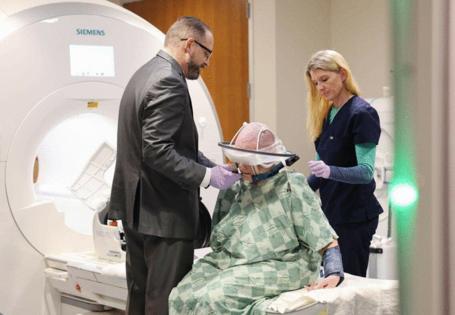
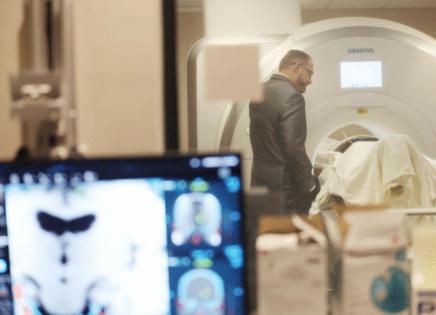
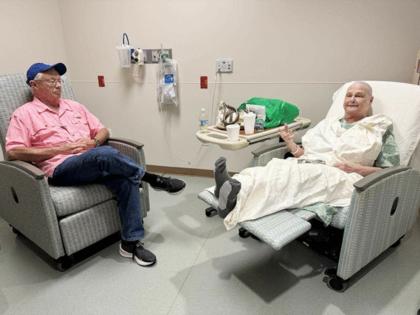
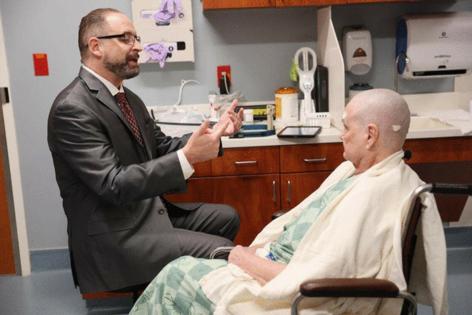
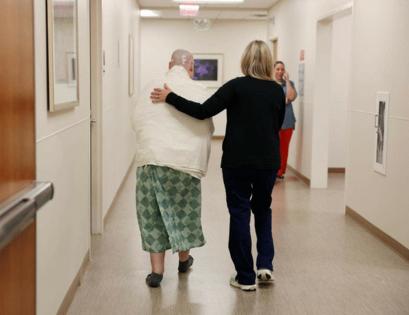














Comments